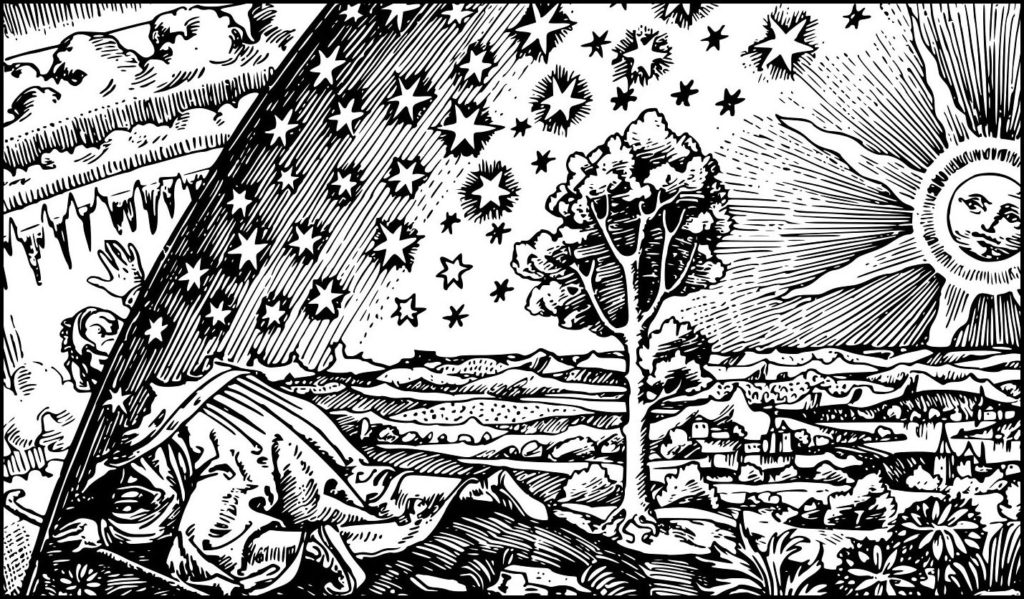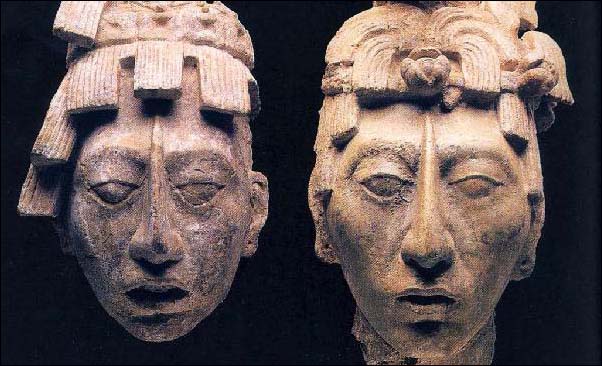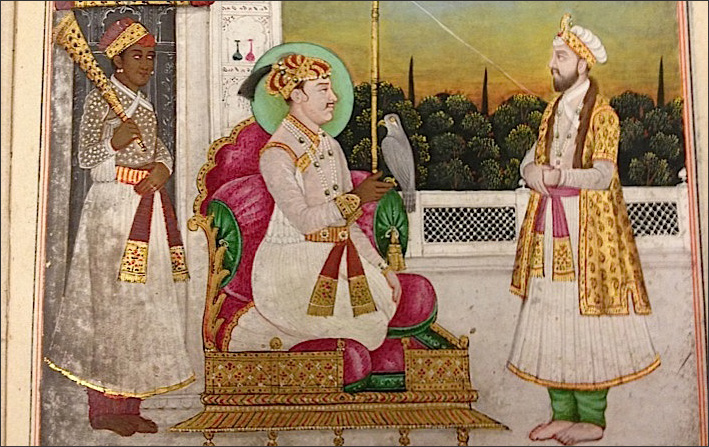There are periods in the life of humanity, which generally coincide with the beginning of the fall of cultures and civilizations, when the masses irretrievably lose their reason and begin to destroy everything that has been created by centuries and millenniums of culture. Such periods of mass madness, often coinciding with geological cataclysms, climatic changes, and similar phenomena of a planetary character, release a very great quantity of the matter of knowledge. ~ Gurdjieff
Historically many generations have believed that their time was apocalyptic. During the Napoleonic age, there were those who thought that the destruction of Napoleon’s armies was the apocalypse and that Napoleon himself was the antichrist. And if we look, for instance, at the time of Gurdjieff and Ouspensky, we find that they lived through the WW1, the Russian Revolution, the great depression, WW2, and the Holocaust, and that in their time Hitler appeared, who is still regarded by many as the figure of the beast or the antichrist.
In the first century the churches that Paul founded, as well as other Christian churches and a number of Jewish cults, believed that they lived in the apocalyptic time. Paul’s converts prepared themselves for the second coming of Christ and a judgment of those who persecuted them, which never came. Instead, they endured the rigors of the times, the public execution of their teachers, and the destruction the Jerusalem. In Revelation, written at this time, the beast is understood to be the Roman Empire and the figure of evil is Nero, who persecuted the Christians because he needed a scapegoat for a fire that destroyed a large part of Rome.
The original idea of the antichrist appears in the letters of John in the New Testament, and it is a plural term. According to John, an antichrist is simply someone who does not believe in the Father and Son, and we do not know how John understood the Father and the Son, whether he thought about them as symbols or aspects of inner revelation, or whether he took the words to mean God and Christ, or both, or something else entirely. The interpretation of the antichrist as a single historical figure only came about a century later with Irenaeus. It was he who created the way we now think about the antichrist, as a single figure who comes to destroy the world
A literal definition of an antichrist simply means the opposite of Christ. On an exoteric level this means someone who does the opposite, or aims to do the opposite, of what Christ did. You can say that Christ came to save the Jews and that Hitler tried to exterminate the Jews. This polarity of actions, from a Christian, esoteric point of view, can be used as a working definition of evil. If we understand that Christ was a conscious teacher, then we can see his role as one who teaches the methods that bring about a change of state; that is, a teacher who helps his disciples find the higher worlds within them. The opposite of that would be someone who promotes lower worlds, who encourages others to express and identify with their violent tendencies, their greed, and their prejudice.
There are two outward universally accepted characteristics of an apocalyptic time. The first is a series of devastating natural and manmade events that bring about widespread destruction and death, the second is a revelation or a disclosure of new knowledge that is supposed to explain the injustices of life on earth.
It would be hard to deny our present world situation does not clearly describe the first aspect of apocalypse. Great fires, massive hurricanes and floods, toxic air, widespread political and corporate corruption, and a global pandemic are the news of the day.
So let’s concentrate on the second: has there been a release of knowledge that clearly explains the injustices on earth? In particular, has Gurdjieff provided that knowledge? I would say that he has; only we have to accept that most people don’t find his explanations satisfactory. Part of the problem is that this kind of knowledge, if it is to be understood, has to be accompanied by a certain level of being. Knowledge without being is just words or opinions; knowledge combined with being brings understanding or revelation.
Despite what the detractors of Gurdjieff’s ideas say about these answers, when we look at man’s most pressing questions that deal with the injustices of the world, we find that Gurdjieff’s system does explain them.
Why is there war? Well, because men are machines and are reacting to planetary influences.
Why is it that global warming is not being dealt with? Because men prefer imagination to reality and because they have no scope of vision, which requires a lasting experience of higher centers.
And why must men suffer? Because without suffering there could be no conscious evolution, because the transformation of suffering, along with the control of attention, is a primary building block in the creation and focusing of a soul. Put in another way, without suffering we could not pull ourselves out of the morass of physical existence, what in the Old Testament was called the valley of tears.
Among religious cults, including the early Christians, we find a common underlying cause for the necessity of an apocalypse: that the world has become so corrupt that only a violent overthrowing of the present order can restore a right relationship between man and God.
Again we find that Gurdjieff, even if his movement did not establish a right relationship between man and God on a large scale, he, at least, provided an answer as to what was wrong with man’s relationship with God: that man in his present state cannot have a relationship with God, that he must change himself first.
Another aspect of apocalyptic thinking is the dream of an earthly paradise for a select group in the wake of the destruction. The problem with this thinking is that physical existence is subject to certain laws and there is nothing any higher power can do to sidestep these laws. The influences that are required to create a paradise would necessitate a change in the place or a change in the role that earth plays in the ray of creation.
In order to have an earthly paradise—one based on physical existence—man would also have to have been made differently. For instance, much of the extremity in the world is caused by the wrong work of the sex center. When the energy of the sex center works through the emotional and intellectual functions, you end up with extreme ideas and extreme political notions, and the justification for emotions like revenge, hatred, and killing, but at the same time, the sex center lending its energy to the lower centers is the cause of much of the goodness and creativity in the world. Sex energy is also a necessary spark for conscious evolution. If it is observed correctly, it gives man a taste of the energy of higher centers, because it functions with the same intensity. Without sex energy the states produced by conscious evolution would be harder to imagine and more difficult to create through inner exercise. In other words, man’s higher possibilities and freedoms are linked to his tendencies for destruction and hatred. From one point of view, a man’s being can be thought of as his capacity to control and transform volatile energies, and an inability to transform those energies can very easily result in extreme and destructive behavior. This is to say that if man is going to transform physical existence, then he must be given freedoms that not only allow for the crystallization of higher bodies, but also allow for the misuse of those same freedoms through identification and mechanical behavior.
In the early church the idea of a judgment where the bodies of the chosen would live in earthly paradise became paramount in defining Christianity as a religion. The belief was that, like Jesus, all true Christians would resurrect bodily. This belief led the church down a path further and further away from the teaching of Jesus.
Tertullian at the end of the first century considered belief in the physical resurrection of Jesus and all other Christians to be the one idea that separated true Christians from heretics.
The salvation of the soul I believe needs no discussion: for almost all heretics, in whatever way they accept it, at least do not deny it. This flesh (that is resurrected) is suffused with blood, built up with bones, interwoven with nerves, entwined with veins… ~ Tertullian, De Rusurrectione Carnis (Taken from The Gnostic Gospels by Elaine Pagels and translated by her.)
What is odd about Tertullian’s argument is that he uses the unlikely nature of physical resurrection as a key selling point. He argues that the views of the heretics are more popular, and therefore less likely to be true to the original Christian teaching because that teaching was radically new, and that it disproved many commonly held beliefs held by non-Christians; that is, by the pagans and the Jews.
Heretics lay their foundations and erect their scaffolding with those materials by which they know it is easy for them to entice men’s minds, the popularity of the ideas making things favorable for them. Is there anything a heretic says, which a gentile has not already said? ~ Tertullian, On the Resurrection of the Flesh
On the Resurrection of the Flesh begins with this: The resurrection of the dead is the Christian trust. By it we are believers.
But both Tertullian’s argument and the idea of bodily salvation are problematic from an esoteric point of view. Tertullian’s view of physical resurrection is not new; it has its roots in the teachings of Paul, but at the same time Tertullian appears to have looked at the differences in Christianity and other cults and philosophies and determined that it was physical resurrection that distinguishes Christianity from Judaism and pagan cults. But novelty, though it may distinguish Christianity from competing cults, is not a measure of conscious origin. Often the reverse is true, that ideas found in all or many religions turn out to have more potential to be objective. It is the differences, and the belief in these subjectivities, that have politicized religions and pitted them against each other.
Also, we need to look at the principle of belief in the context of the resurrection. The story from the gospels that stands out in this context is that of Thomas, from John, who refused to believe that Jesus had risen until he could see the nail marks in his hands and put my finger where the nails were, and put my hand into his side. This was not an issue for the other disciples because they had witnessed the risen Jesus, but they didn’t believe Mary Magdalene and the other women who had the news before them. They thought the women were mad. The story of Thomas’ doubt appears only in John, which, of the four Gospels, was written last. Though there are known to be earlier elements in John’s Gospel, it is generally thought that it was completed between 90 and 110, that is, 60 to 80 years after the death of Jesus, probably by a man who had to take the resurrection of Jesus on faith, because it is very unlikely that he was part of the original circle of Jesus. It is more likely that the writer of John was part of a community that was founded by the apostle that we know as John. This alone makes the famous line blessed are those who have not seen and yet have believed suspect, both because it reflects the experience of the writer rather than the characters in the story, and because it doesn’t appear in the other three gospels. Elaine Pagels suggests that John was written after the Gospel of Thomas and that it was, in part, a reaction to it. In the Gospel of Thomas knowledge and understanding (Gnosticism) replace the emphasis of belief found in later Christian thought, particularly in Paul’s letters. If this is the case, it makes John’s picture of an unbelieving Thomas even more suspect. Even if this passage in John is historically accurate, it doesn’t negate the many other passages in the gospels that describe Jesus as having two ministries, one that was public, and one that was for his inner circle, who were charged with understanding not believing.
The disciples came to him and asked, “Why do you speak to the people in parables?”He replied, “Because the knowledge of the secrets of the kingdom of heaven has been given to you, but not to them. Whoever has will be given more, and they will have an abundance. Whoever does not have, even what they have will be taken from them. This is why I speak to them in parables: Though seeing, they do not see; though hearing, they do not hear or understand.” Mathew 13: 10-13
In the New Model of the Universe Ouspensky has a chapter on the New Testament and the exclusiveness of the teaching of Jesus is one of his main themes.
The idea of the exclusiveness and difficulty of salvation is so definite and so often emphasized in the Gospels, that all the lies and hypocrisy of modern Christianity are indeed necessary to forget it and to attribute to Christ the sentimental idea of general salvation. ~ P. D. Ouspensky
The question of whether the resurrection was a symbol or a historical event is not an easy one to answer. The gospel in the first century was a literary form, not a historical biography. This is understood better since the discovery at Nag Hammadi, and the publication of the texts that were part of the find. There we have gospels named after the disciples and friends of Jesus, that we know were not actually written by these figures. In Gnostic churches the experience of charismatic inspiration seems to have been encouraged. The idea that a man, or woman, in the second century could, to use a modern term, channel the spirit of Thomas, or Peter, or Mary Magdalene or Judas appears to have been an accepted medium of acquiring gospels of local relevance. Think about it this way: if I were able to channel the spirit of Gurdjieff—assuming that my community accepted such a talent—then I could emphasize the aspects of Gurdjieff’s story that were relevant to my community’s story and comment on ideas that were important to us in the twenty-first century. Something like this seems to have been an accepted practice in early Christian churches.
When Irenaeus at the end of the second century dismissed the Gnostic gospels and held that only the gospels we now have in the New Testament should be authorized as true gospels, his criteria was that Mark, Matthew, Luke, and John were written by the apostles who physically knew Jesus and were taught by him, but few modern scholars believe that is the case. This became an important part of the debate over the resurrection because all the gospels he chose describe a physical resurrection of Jesus. This gives the impression to later Christians that there was an agreement about this issue, but a number of Gnostic gospels describe the resurrection of Jesus not as a historical event, but as a symbol that represents a form of inner revelation, so we know that in the early Christian movement, there was not a single view of the story of the risen Jesus.
Rodney Collin, a student of Ouspensky, suggests that the physical resurrection of Christ was a demonstration of his level. Collin proposes that Christ was working directly from the electronic world where he could create and destroy bodies at will. In other words, the body of Christ was not a vehicle he planned to inhabit eternally but one which he could use and dispose of as he pleased. More to the point Collin was suggesting that Christ was not indicating to the apostles that they and all later Christians would live in a kind of physical heaven, but that he was of such a level that he could put on and take off a body as we put on and take off clothes, and that the body was no more permanent to him than our clothes are to us.
When we can admit that the end of religion is the religious experience, which is mystical in nature, then it’s not difficult to see that the picture of a physical resurrection for us—that is, ordinary people—is a limiting vision. Physical existence is familiar, and so it is easier to imagine an afterlife that mirrors the life of the body than it is to change our way of thinking and transfer our identity to non-physical reality.
Our fear of death, the door to a non-physical reality, is not a simple one to crack. Fear of non-existence, of loss of identity, of punishment, and simply of change are all common. But for a moment let’s imagine the opposite experience; that is, birth, the experience of a non-physical body being confined to a physical one. This is from the Hermetica:
When they were about to be shut up in the bodies, some of them wailed and moaned, just that and nothing more; but some there were that struggled against their doom, even as beasts of noble temper, when they are caught by the crafty tricks of cruel men, and dragged away from the wild land that is their home, strive to fight against those who have mastered them. And another shrieked, and again and again turning his eyes now upward and now downward, said, ‘O thou Heaven, source of our being, and you bright-shining stars, and never-failing light of sun and moon; how cruel it is that we are being torn away from things so great and splendid! . . .
We are to be expelled from the holy atmosphere and a place nigh to the vault of heaven, and from the blissful life we lived there, and to be imprisoned in habitations mean and base as these. What hateful things we shall have to do, in order to supply the needs of this body that must so soon perish! Our eyes will have little room to take things in; we shall see things only by means of the fluid which these orbs contain; and when we see Heaven, our own forefather, contracted to a small compass, we shall never cease to moan.










